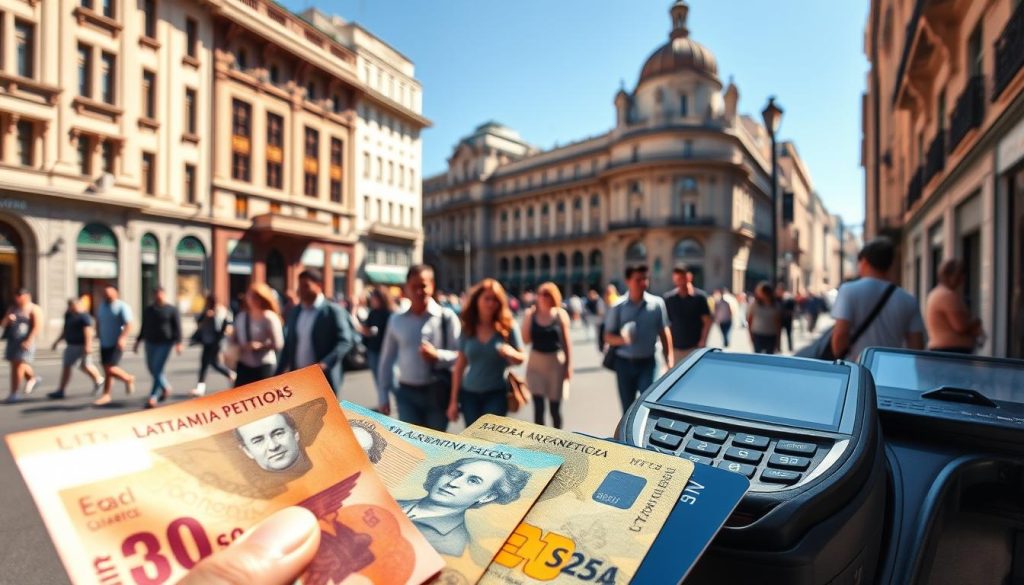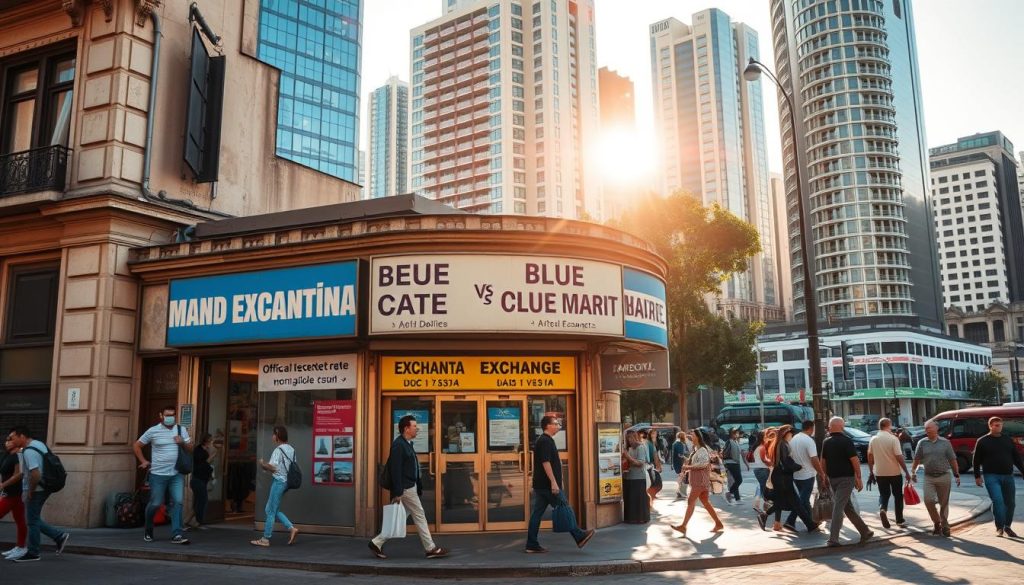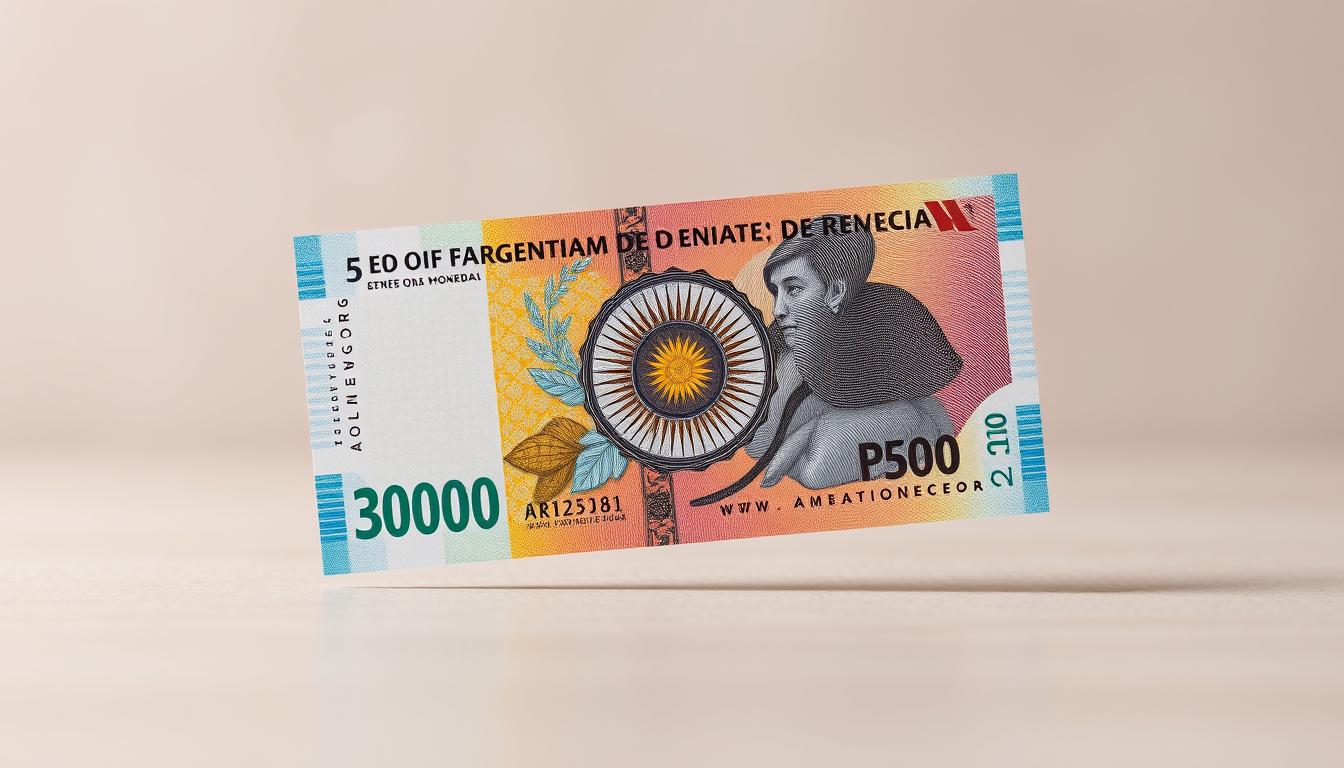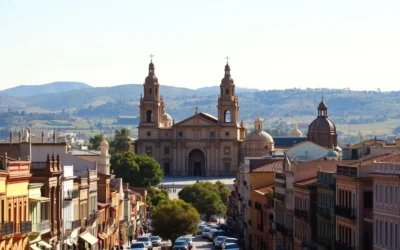Did you know that the Argentine peso has experienced inflation rates nearing 300%? This makes understanding the local currency essential for anyone planning a trip to this vibrant country.
Navigating the financial landscape here can be tricky. From fluctuating exchange rates to handling cash, there’s a lot to consider. This guide will help you make sense of it all.
We’ll cover everything from the history of the argentine peso to modern-day payment methods. Whether you’re using credit cards or exchanging money, we’ve got you covered.
By the end of this article, you’ll feel confident managing your finances during your stay. Let’s dive in and explore the ins and outs of currency and payments in Argentina.
Introduction: Understanding Money in Argentina
Managing your money wisely can make or break your travel experience. In a country with a volatile economy, knowing how to handle currency is essential. Argentina’s financial landscape is shaped by high inflation and fluctuating exchange rates, making it unique compared to other destinations.
Inflation has led to multiple ways of handling money. You’ll encounter both official and unofficial exchange methods. Understanding these differences is key to getting the best value for your dollar.
Setting the Stage for Your Trip
Before you travel, it’s important to familiarize yourself with the local currency. The Argentine peso has seen significant devaluation over the years. This means the rate you get today might not be the same tomorrow.
Here’s what you need to know:
- Official exchange rates are set by banks and government institutions.
- The blue market offers a higher rate but operates outside official channels.
- Converting dollars to pesos requires careful planning to maximize your funds.
Why Currency Matters in Argentina
Economic conditions here directly impact everyday transactions. High inflation means prices can change rapidly. This makes it crucial to stay informed about the latest exchange rates.
Using the right exchange method can save you money. Whether you choose official channels or the blue market, understanding the pros and cons of each will help you make smarter financial decisions during your trip.
Argentina: Ultimate Travelers Guide to Currencies & Payments
From cash to cards, knowing your options is key to managing finances. This country offers a mix of traditional and modern payment methods, each with its own advantages. Whether you’re shopping in Buenos Aires or exploring smaller towns, understanding how to pay can make your trip smoother.
Cash remains widely used, especially in local markets and smaller establishments. Many places prefer pesos, so having some on hand is essential. Larger cities, however, are more card-friendly, with most businesses accepting major credit cards.

Using a card is convenient for larger purchases or dining out. However, it’s important to check for foreign transaction fees. Some banks offer better rates for international use, so research your options before you travel.
For exchange money scenarios, banks and official exchange offices are reliable but may have limited hours. ATMs are another option, though daily withdrawal limits and fees can add up. Planning ahead ensures you always have enough cash for your needs.
Despite the rise of digital payments, many places still rely exclusively on cash. This is especially true in rural areas or for smaller transactions. Keeping a mix of both cash and cards ensures you’re prepared for any situation.
Getting to Know the Argentine Peso
The Argentine peso has a rich history that reflects the country’s economic journey. From its colonial origins to modern-day challenges, the peso has evolved significantly. Understanding its story can help you navigate financial decisions during your trip.
History and Evolution of the Peso
The peso’s roots trace back to the Spanish colonial era. It was first introduced in the 19th century and has since undergone multiple transformations. Economic instability, including high inflation and devaluations, has shaped its current form.
In 1992, the peso was reintroduced as the official currency, replacing the austral. Since then, it has faced persistent challenges, including rapid inflation. This has led to the introduction of higher-value bills, such as the 20,000 peso note.
Key Denominations and Their Role
Today, the peso comes in various denominations, each playing a role in everyday transactions. The most common bills include 5, 10, 20, 50, 100, 200, 500, 1,000, and 20,000 pesos. Coins are also available but are becoming less common due to inflation.
High inflation has made smaller bills like the 5 or 10 peso note less useful. Larger bills, such as the 1,000 or 20,000 peso note, are now more practical for daily use. This shift reflects the ongoing economic challenges.
“The peso’s value can change rapidly, so staying informed about the latest exchange rates is crucial.”
Here’s a quick overview of the most common denominations:
| Denomination | Usage |
|---|---|
| 5 Pesos | Rarely used due to inflation |
| 100 Pesos | Common for small purchases |
| 1,000 Pesos | Used for larger transactions |
| 20,000 Pesos | Introduced to handle high inflation |
Understanding these denominations can help you manage your money more effectively. Whether you’re shopping in local markets or dining out, knowing which bills to use ensures smoother transactions.
Economic shifts have also influenced informal currency practices. While the official currency is the peso, many people rely on unofficial exchange methods. This duality is a key aspect of the financial landscape.
By learning about the peso’s history and denominations, you’ll be better prepared to handle your finances. This knowledge can make your trip more enjoyable and stress-free.
Navigating Official Exchange Rates vs the Blue Market
Understanding the difference between official and blue market rates can save you money. In this country, the financial landscape is shaped by two distinct systems: the official exchange rate and the informal blue market. Knowing how to navigate both is essential for maximizing your funds.

The Official Rate Explained
The official exchange rate is set by the government and banks. It’s the rate you’ll see at authorized currency exchange offices or when using credit cards. While it’s reliable, it often doesn’t reflect the true value of the peso due to economic factors like inflation.
Using the official rate is straightforward, but it may come with higher fees. For example, banks might charge additional costs for international transactions. This makes it less favorable for travelers looking to stretch their budget.
Understanding the Blue Market Dynamics
The blue market, on the other hand, operates outside official channels. It offers a more favorable rate, often significantly higher than the official one. In cities like Buenos Aires, this market thrives due to high demand for foreign currency.
However, the blue market comes with risks. Transactions are informal, and there’s no guarantee of safety. It’s crucial to deal with trusted sources to avoid scams or counterfeit bills. Despite these risks, many travelers find the potential savings worth it.
In smaller towns throughout the country, the blue market is less common. Here, official channels are often the only option. This highlights the importance of planning your currency exchange strategy based on your location.
“The gap between official and blue market rates can be as high as 74%, making it a key factor in financial planning.”
Before exchanging money, always check live rates and compare fees. Whether you’re in a bustling city or a rural area, staying informed ensures you get the best value for your funds.
Money Handling Tips for Your Trip
Handling money efficiently can make your trip smoother and stress-free. Navigating financial challenges abroad requires careful planning and preparation. Here are some practical tips to help you manage your funds wisely.
Smart Strategies for Cash and Cards
Using a mix of cash and credit cards is essential. Cash is widely accepted, especially in smaller towns and local markets. However, carrying too much cash can be risky. A balanced approach ensures you’re prepared for any situation.
For larger purchases or dining out, credit cards are convenient. Check for foreign transaction fees before using them. Some banks offer better rates for international use, so research your options in advance.
ATM Usage: What You Need to Know
ATMs are a common way to access cash, but they come with challenges. High fees and low withdrawal limits can add up quickly. For example, the average ATM fee ranges from $10 to $13 per transaction, and the daily limit is often around $40.
To save time and money, plan your withdrawals strategically. Avoid peak hours when ATMs are busiest. Also, consider withdrawing larger amounts less frequently to minimize fees.
“Using a mix of cash and cards ensures you’re prepared for any situation, whether you’re in a bustling city or a rural area.”
Real-World Advice from Travelers
Experienced travelers recommend keeping small bills for everyday transactions. Many merchants struggle to break larger bills, so having smaller denominations can save time and hassle.
Here’s a quick summary of best practices:
| Tip | Why It Helps |
|---|---|
| Use a mix of cash and cards | Ensures flexibility in payment options |
| Limit ATM usage | Reduces fees and saves money |
| Carry small bills | Makes transactions smoother |
| Plan withdrawals | Saves time and avoids peak hours |
By following these tips, you can handle your money more effectively during your trip. Whether you’re exploring cities or rural areas, a well-thought-out plan ensures you’re ready for any financial challenge.
Exchanging Money: Cuevas, Calle Florida, and Banks
Exchanging money efficiently is a key part of any trip, and knowing your options can make a big difference. Whether you’re looking for the best rates or the safest way to handle your funds, understanding the local exchange landscape is essential. Here’s a breakdown of the most common places to exchange money and how to navigate them.

Cuevas – Your Gateway to the Informal Exchange
Cuevas are informal exchange centers trusted by locals for better rates. These small, often unmarked places operate outside official channels, offering a more favorable exchange rate than banks. However, they come with risks, such as potential scams or counterfeit bills.
To use a cueva safely, always deal with trusted sources. Ask for recommendations from locals or your hotel. It’s also a good idea to count your money carefully and verify the bills before leaving. While cuevas can save you money, they require caution and awareness.
Bank and Official Currency Exchange Options
Banks and official exchange bureaus are the safest way to exchange money. They offer reliable rates and secure transactions, though the rates may not be as favorable as informal options. For example, Banco Nación is known for offering some of the best official rates.
Using official channels is straightforward, but it may involve longer wait times or limited hours. Always check the latest rates and fees before proceeding. This option is ideal for those who prioritize safety over maximizing their funds.
“Choosing the right place to exchange money can save you time and ensure you get the best value for your funds.”
Here’s a quick comparison of the main exchange options:
| Option | Pros | Cons |
|---|---|---|
| Cuevas | Higher rates, quick transactions | Risks of scams or counterfeit bills |
| Calle Florida Street Exchangers | Convenient, competitive rates | Informal, requires caution |
| Banks | Safe, reliable | Lower rates, limited hours |
When deciding where to exchange money, consider your priorities. If you’re looking for the best rates, informal options like cuevas or Calle Florida street exchangers might be the way to go. For safety and reliability, banks and official bureaus are your best bet.
Always verify rates and fees before making a decision. By understanding your options, you can choose the best place to exchange money and make the most of your trip.
Credit Cards and ATM Practices in Argentina
Navigating credit card and ATM usage can greatly enhance your travel experience. While card payments are becoming more common, cash remains essential in many places. Knowing when to use each method ensures smooth transactions and avoids unnecessary fees.
When and Where to Use Cards
Credit cards are widely accepted in upscale hotels, restaurants, and larger retail shops. They’re convenient for larger purchases or dining out. However, foreign transaction fees can add up, so check with your bank before traveling.
Smaller establishments, especially in rural areas, often prefer cash. This is due to high card processing fees. Carrying a mix of cash and cards ensures you’re prepared for any situation.
The Reality of ATM Withdrawals
ATMs are a common way to access cash, but they come with challenges. Daily withdrawal limits and high fees can make them less practical. For example, fees can range from $10 to $13 per transaction, and limits are often around $40 per day.
To minimize fees, plan your withdrawals strategically. Avoid peak hours and consider withdrawing larger amounts less frequently. This saves both time and money.
“Using a mix of cash and cards ensures flexibility, whether you’re in a bustling city or a quiet town.”
When paying in foreign currency like euros, always check the conversion rate. Some businesses may offer better rates for local currency, so compare before making a purchase.
Here’s a quick summary of best practices:
- Use cards for larger transactions at hotels or restaurants.
- Carry cash for smaller shops and local markets.
- Plan ATM withdrawals to avoid fees and limits.
- Compare currency conversion rates for the best value.
By following these tips, you can handle your finances more effectively. Whether you’re exploring cities or rural areas, a well-thought-out plan ensures you’re ready for any financial challenge.
Safety and Security Considerations for Your Funds
Keeping your money safe while traveling is a top priority. Whether you’re exploring bustling cities or quiet towns, protecting your funds ensures a stress-free journey. With the right tools and strategies, you can minimize risks and focus on enjoying your trip.

Practical Tools for Protecting Cash
Using practical accessories like money belts and anti-theft backpacks can make a big difference. These tools keep your cash and cards hidden, reducing the chance of theft. For example, a money belt worn under your clothes is a discreet way to carry valuables.
Anti-theft backpacks with slash-proof material and lockable zippers add an extra layer of security. While these items may have an upfront cost, they’re worth the investment for peace of mind.
Minimizing Risks and Tracking Changes
Setting up secure accounts before your trip is a smart move. Use online banking to monitor your account activity and track any changes in your balance. This helps you spot unauthorized transactions quickly.
Carry only the cash you need for the day and leave the rest in a hotel safe. This reduces the risk of losing large amounts of money. Always keep an eye on your surroundings, especially in crowded areas.
Identifying Safe Areas and Best Practices
Some areas are safer than others for handling money. In busy tourist spots, be extra cautious with your belongings. Avoid displaying cash or valuables in public, as this can attract unwanted attention.
When withdrawing money, use ATMs located indoors or in well-lit areas. Always shield your PIN and check for skimming devices. Staying alert and following these practices can prevent theft.
“Taking simple precautions can save you from costly mistakes and ensure your funds remain secure.”
By using the right tools and staying vigilant, you can protect your money effectively. Whether you’re in a bustling city or a quiet town, these strategies will help you travel with confidence.
Expert Traveler Insights and Money Tips
Traveling smart means knowing how to handle your money effectively. Experienced travelers often share valuable insights that can save you time, money, and stress. Whether you’re dining out or exploring new places, these tips can make your trip smoother.
Real-World Advice for Handling Currency
One common tip is to always carry small bills. Many local shops and restaurants struggle to break larger denominations. This simple strategy can save you from awkward situations and make transactions quicker.
Another key tip is to research restaurant tipping customs. In many places, a 10% tip is standard, but it’s always good to confirm. Over-tipping can strain your budget, while under-tipping might lead to awkward moments.
Acting like a savvy tourist also means avoiding common scams. For example, always count your change carefully and be cautious of overly friendly strangers offering deals. Staying alert can prevent costly mistakes.
“Planning ahead and staying flexible are the keys to managing your money effectively while traveling.”
Here are some additional strategies that have worked well for others:
- Use a mix of cash and cards for flexibility.
- Withdraw larger amounts less frequently to minimize ATM fees.
- Keep an eye on exchange rates to get the best value.
By following these tips, you can handle your finances like a pro. Whether you’re dining at a local restaurant or exploring as a tourist, these insights will help you make the most of your trip.
Conclusion
Ensuring a smooth financial experience starts with being prepared. This guide has equipped you with essential tips to navigate the local currency argentina argentine landscape. From understanding the argentina argentine peso to choosing the right exchange methods, you’re now ready to handle your funds wisely.
Stay vigilant, especially at the airport and during transactions. The peso’s value can change daily, so keeping an eye on the latest rates is crucial. This knowledge ensures you get the best value for your money.
By mastering the nuances of currency argentina argentine exchange, you’ll enjoy a more seamless journey. Always review current rates and prioritize safety when handling cash. With these strategies, you’re set for a stress-free and enjoyable trip.
The above is subject to change.
Check back often to TRAVEL.COM for the latest travel tips and deals.
Here are some Tours & Sightseeing suggestions that might pique your interests!






